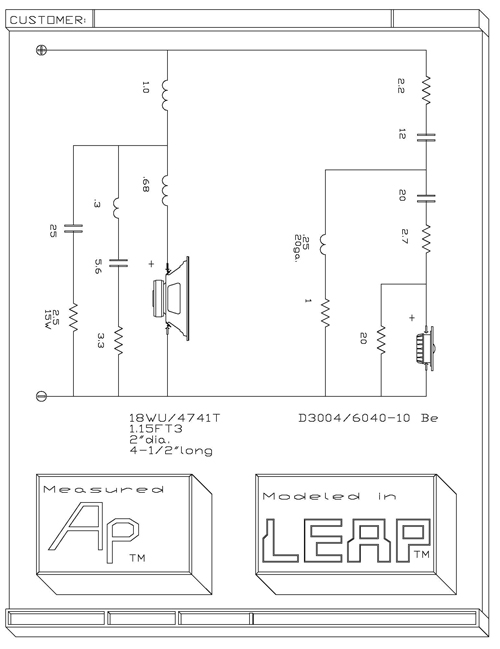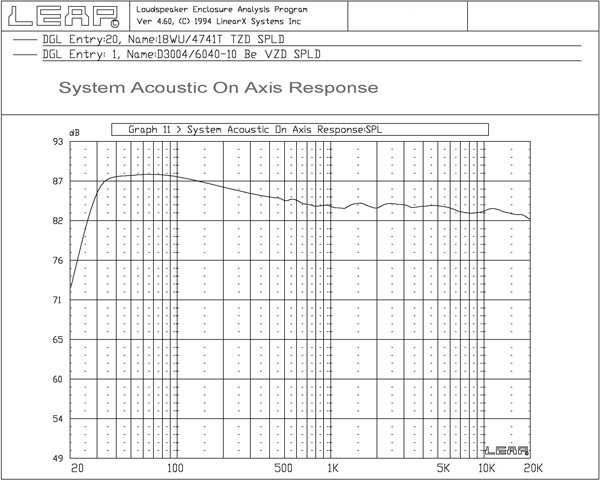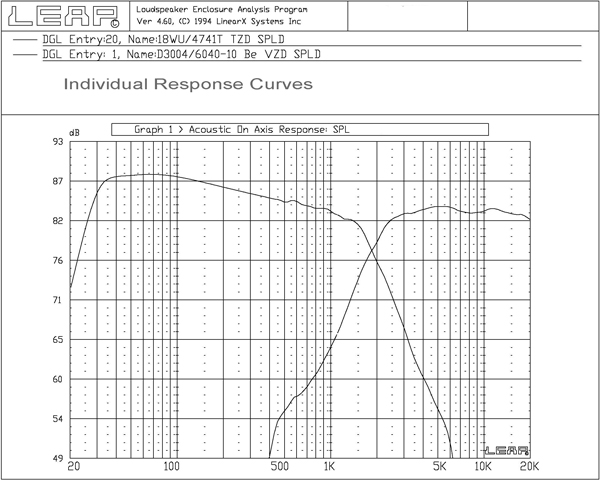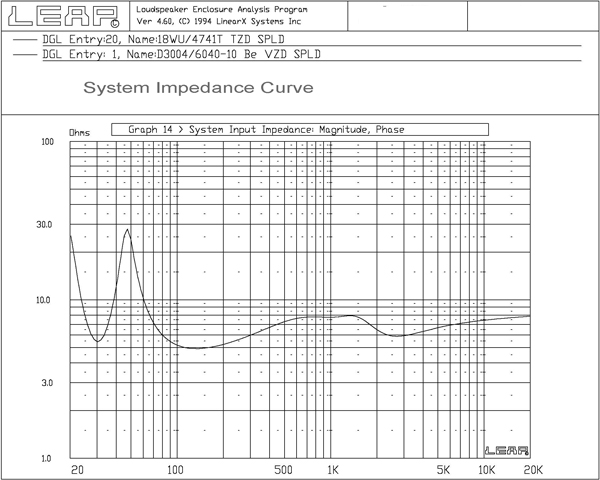Crossover Design
LEAP Crossover Designs by Madisound
Madisound begins by taking anechoic driver response and impedance measurements and loading this data into the LEAP filter analysis program by
The typical result is a smooth and flat response curve, to the limits of the selected
Please note that every design is different, and we do not design specific-order crossovers. We determine what is required for the optimal acoustic response of the drivers. Most designs are 12db/octave (2nd order), 18db/octave (3rd order), or a hybrid combination of the two. Zobel impedance compensation networks, baffle step compensation, notch filters, and attenuation circuits are utilized when required.
LEAP crossover design results will be emailed to you as a PDF file. We will provide you a quote for crossover parts and assembled crossovers based on your design at that time.
Leap designs are done in the order that they are received. The typical lead time is 1-2 two weeks, but it could be longer depending on how many designs we have in the queue. If we need more information from you about your design, Madisound will contact you once you've placed an order.
Note: This service is for 2-Way (Tweeter - Midwoofer) and 2-Way MTM (Midwoofer - Tweeter - Midwoofer) passive crossover designs. We reserve the right to reject design requests based on a variety of factors, and will promptly refund you in full should that occur.
Madisound Professionally Assembled Crossovers
Based on your LEAP design results, these can be a
You can view pictures of our assembled crossovers by viewing our DIY Speaker Kit pages.
Note: If you have an existing crossover design that you would like us to build professionally assembled crossovers for, please email us the schematic and we will provide you a quote.
Ordering a LEAP Design
Do you require a 2-Way TM or 2-Way MTM design?
Select from the drop down menu above.
What drivers are you using?
They must be Madisound stock items, or drivers we have carried/measured in the past. Enter the driver models in the text input boxes above.
What is your baffle width and height?
Enter dimensions in the text input boxes above.
What are your box volumes? Or should we determine them for you? Sealed or ported?
Enter answers in text input boxes above.
Please include any further information about your project in the order “comment” section of your order at checkout.
Example of LEAP Crossover Design Results





Notes on Reading LEAP Design Results
- The
low end lift on the bass response is a result of < 200Hz being simulated in ½ space. - Simulating < 200Hz in ½ space and the resulting response gradually tilted downwards, yet flat with
smooth transition between the drivers, results in a linear real world response. In our experience, modeling like this provides the best sound reproduction in a typical home listening environment. - System sensitivity can be estimated by the
avg db level between the 200Hz to 800Hz range. - The deep and symmetrical notch, when the tweeter is connected with inverse polarity, shows that the drivers should have good phase characteristics across the crossover region.
